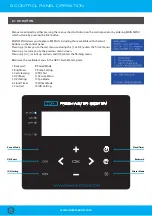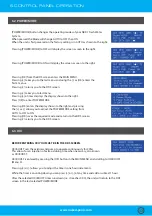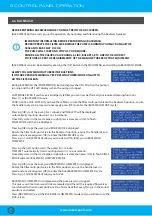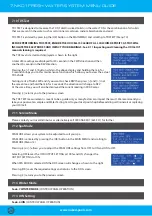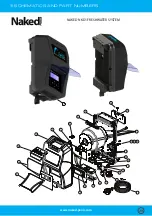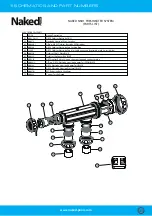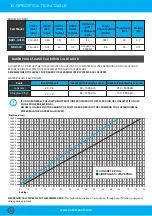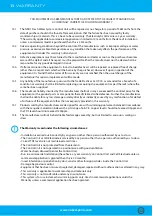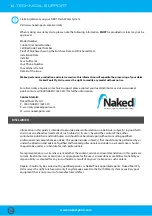
9. SYSTEM MAINTENANCE
Maintenance of your NKD1 Fresh Water System is designed to be simple. Your Fresh Water System has to be one of
the most productive pieces of equipment on your swimming pool so it will require some basic maintenance.
While water chemistry will always be the most important form of maintenance there are also other hints and
pointers to take note of.
DO NOT
cover the Control Unit with towels or similar. Air circulation is important to ensure optimum performance
of the unit at all times.
To extend the life of your unit we always recommend installation in an under cover area away from the elements.
Placing the unit in a closed shed or similar environment with chemicals, fertilisers and other corrosives will damage
the unit and could void your warranty.
Check that the plug connections on both the OXI Cell and ION Rod cables are tight and are in sound condition at
least once a year.
9.1 Inspecting and Cleaning the OXI Cell
Reverse Polarity electrodes should not normally require cleaning, however, in areas with very hard water all
calcium may not be removed. A calcium deposit might form on the lower areas of the electrode, the sensor or the
sides of the electrode plates. This will
NOT
affect the operation of your system.
All electrodes must be cleaned before scale/calcium builds up to the point where the electrode gaps in the OXI Cell
become bridged. If the OXI Cell has excessive calcium deposit, this may damage the electrode coating, as the
bridging causes rubbing on the plate coating which in turn affects operation.
Check the OXI Cell to prevent the accumulation of pool debris that for any reason may have by-passed the pool
lter, particularly after backwashing.
Check that the O-ring is clean, greased with silicone grease (
DO NOT
use petroleum based jelly) and securely
located in the Housing.
For cleaning, please follow these steps:
Switch off the wall outlet switch as this ensures the pump and system will not turn on.
Unscrew the OXI Cell Locking Ring and remove the electrode for inspection. If calcium build-up is present, immerse
the electrode in cell cleaning solution.
A solution can be made by mixing 1 part hydrochloric acid to 10 parts of water. If excessive build up is present a
stronger solution may be used to remove the calcium. Using 5 parts of water will make a more aggressive solution
and will not damage the electrode. You can use cell cleaning solutions and if you do then follow the instructions
supplied. Allow the cleaning solution to dissolve the calcium deposits for about 10 minutes. Dispose of the
cleaning solution at an approved Council Depot and never into storm water or sewage drains.
www.naked-pools.com
24



